Post the abrogation of Article 370, with restrictions in Kashmir - clampdown on communication channels through mobile and internet services - the information coming out through media outlets cannot be the depiction of the complete truth of the situation. Lack of knowledge about Kashmir society’s myriad complexions makes the media susceptible to false propaganda or half- truths. The media reports therefore cannot be well authenticated to reflect the ground situation in entirety. Anyone who has closely followed the Kashmir developments keenly since the decades of conflict will agree that restrictions or no restrictions, Kashmir cannot be put in one frame. The society is so complex and mysterious in its responses that there cannot be just one ‘truth’ about it. It is like that inter-vainal branching system of the human body – only a specialized doctor can have a fair idea of it.
The truth about the media today is that even if you allow it to do its job, it might not do it honestly and impartially. The western media, which is very critical of the Indian state on the prevailing Kashmir situation, is engaged in concoction of facts more than anyone else. And reporting on Kashmir is based on perceived narratives; the people reporting for the national media in Kashmir are saying half truths. In the ultimate analysis of the situation prevailing in Kashmir post the August 5 decision, one can safely argue that most outsiders know very little about the actual impact of the decision. The rest are only playing the narratives that they are part of.
The situation is highly fluid now, and the media still has very limited access to the country side. The popular saying that “If you allow media to function normally during extraordinary situations, it will damage you and if you don’t allow it to do its job it will damage you more” seems to be in full play in Kashmir. Most reporting on Kashmir since August 5 can be described delusional or illusional. Only an insider with his hand on Kashmir’s pulse and clean of nepotism, favoritism and corruption can actually bring out the whole truth, provided he or she is honest and unbiased with no prejudices whatsoever.
One can say the situation in Kashmir is not worse, and it is not good too. Two eyewitness accounts in a single day about the Kashmir situation will help in understanding the complexity of the situation in Kashmir.
Ghulam Muhammad Bhat of Khanyar in downtown Srinagar returned from Haj pilgrimage on September 13. Bhat is a retired government servant and takes keen interest in political developments. On September 19, he told me that people in Kashmir are engaged in their normal business. He saw Kashmiris visiting the Civil Secretariat to pursue their files. People are seen in long queues outside the Secretariat to get their work done. They are allowed in after a strict security check. The Civil Secretariat is functioning normally to the extent that elections for the Civil Secretariat Employees Union were held on September 16 after the contestants campaigned vociferously for about a week. Posters and pamphlets could be seen everywhere on every floor of the Civil Secretariat. According to Bhat, vendors have resumed normal activity roughly September 10 onwards. He said that there are no protests anywhere in downtown Srinagar. Pakistan, he insisted, is the only factor that the Indian state should take care of. Bhat could not resist adding that the August 5 decision came as a shock to one and all in Kashmir, and that the sense of insecurity was aggravated.
Let us visit south Kashmir now. The eyewitness account here is that incidents of stone-pelting suddenly picked up about September 8 onwards. The spontaneous increase in stone-pelting and clashes with security forces surprised everyone. Private vehicles were attacked by violent mobs, leading to a complete stop of vehicular movement. Things started settling down only after the redeployment of heavy contingents of security forces September 14 onwards. This eyewitness account was of some areas of Kulgam district and a few places in Anantnag district.
Then there is the third account. Militants on September 13 asked fruit growers both in north and south Kashmir not to venture into their orchards September 14 onwards. They also issued strict warnings to the parents through posters both handwritten and computerized, that they should not send their wards to schools, and that students should not appear in any examinations whatsoever. The week that saw violence in one part of south Kashmir ends with the militant diktat in another part. From September 15, farmers stopped plucking fruits or engaging in other activities in their farms.
Eye-witness accounts say that people are willingly following the militant diktat, at least for now. The reason behind it is the UN General Assembly Session on September 27. Most rural Kashmiris continue to attach much significance to the UN. They know little about the geo-political equations and the power games of the world community. Believing in Pakistan’s false propaganda, many Kashmiris have the illusion that Pakistan can get international support on Kashmir.
There has been much observation in the media on how the situation has remained comparatively calm in Kashmir despite the enormity of the August 5 decision. Agreed, and that there are unprecedented security measures in place. But there is more to it than meets the eye. In preceding years, Kashmir’s political parties would deftly exploit any tension in the Valley to score points against the ruling party. The party in opposition would rush in with illicit actions to fuel the situation. Street agitations and protests were the norm, which would turn violent in no time.
In 2009-2010 and 2012, Mehbooba Mufti-led People’s Democratic Party (PDP) was out of power in Kashmir. PDP made it difficult for the Omar Abdullah government to restore order after initial provocations of any kind. Mehbooba exploited the situation to the maximum, making it difficult for Omar to bring the situation back to normal. In 2016, Omar Abdullah paid her back in kind, and saw to it that the situation went out of control so that Mehbooba was discredited in public eye regionally and nationally. This time, there are no political parties to fuel the agitation. Apart from being in preventive custody, the power centers of both parties are out of power, and hence on the same page.
There are two reasons why the national or international media has not been able to comprehend the present scenario totally and honestly. The reason is not just lack of unhindered access. The reason is also that they are not ready to see the complete picture.
On September 19, for the second time the militants set on fire a private vehicle in Sopore area of north Kashmir. Who would dare to ply on roads the next day? On finding the roads deserted, the media gave us their respective versions of truth. One version is that people observed complete shutdown. This could not be denied. The roads and streets were deserted. Life had come to a grinding halt. But who would speak the truth behind the shutdown? There are several facets to truth here. Part of the truth is that militant threat is real. Part of the truth is also that ordinary Kashmiris want to avoid any kind of friction with militants at least till September 27. Part of the truth also is that Pakistan will try its utmost to ensure that normalcy does not return to Kashmir at least till September 27. Part truth is also that people in many parts of Kashmir have started normal life, braving any threats whatsoever.
There is certainly truth in the reports that Kashmiris are shocked by the enormity of the August 5 decision. It is also true that the pro-Pakistan constituency in Kashmir is smartly playing the game to compel the administration to prolong the mobile and internet clampdown. This has been the main cause of concern for many in the international community. So many truths come together, and yet the complete truth of Kashmir remains elusive. There is no one in the media to tell their respective audiences the complete truth of Kashmir.
(The paper is the author’s individual scholastic articulation. The author certifies that the article/paper is original in content, unpublished and it has not been submitted for publication/web upload elsewhere, and that the facts and figures quoted are duly referenced, as needed, and are believed to be correct). (The paper does not necessarily represent the organisational stance... More >>
Image Source: https://english.cdn.zeenews.com/sites/default/files/2019/09/05/816530-kashmir.jpg


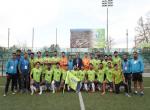
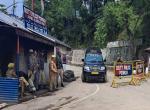

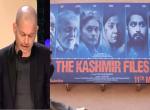
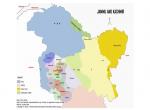
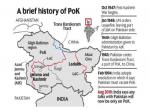
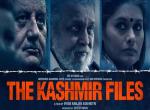
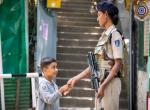
Post new comment